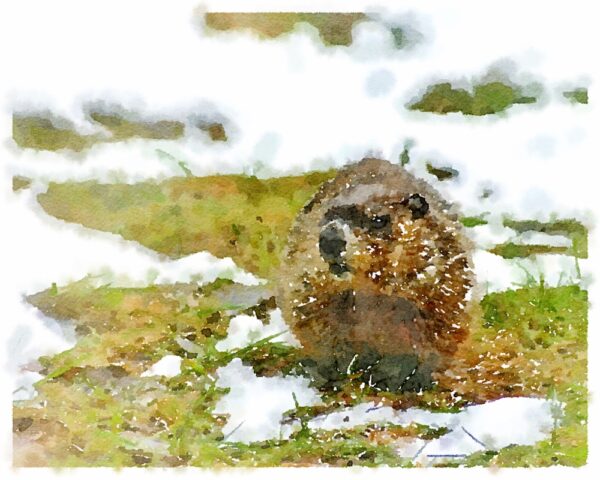
Did Punxsutawney Phil see his shadow? Is spring around the corner? Are we headed into six more weeks of winter?
In this high tech era of satellites forecasting weather from beyond the beyond, intricate algorithms gobbling gargantuan data sets, and media channels dedicated to analyzing and communicating meteorological mysteries in real time, we still get excited on February 2 to see how a groundhog will react to brisk midwinter conditions. It’s folksy fun, I suppose. Maybe a result of cabin fever…
Today the furry fellow decided it was wiser to double down on hibernation. Spring’s still a long way off, at least in Punxsutawney, Pennsylvania.
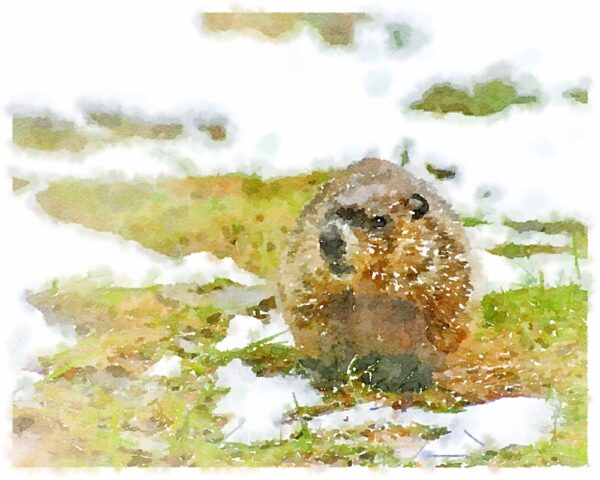
Groundhog Day Haiku
To be sure, Essex isn’t exactly tropical compared to Punxsutawney, so a belated de-wintering would seem inevitable based upon this morning’s proceedings. But, I’m pro-spring, even if that puts me in disagreement with Phil.
Unlike the groundhog, fur ruffed against shadowed chill, I suspect springtime.
I love springtime almost as much as I love morning, and for similar reasons. So much possibility in both reawakenings!
And who’s to say that haiku poetry is any less indicative of spring’s arrival than a groundhog coddled by top hatted members of the Punxsutawney Groundhog Club gathering at Gobbler’s Knob? Not I. (Which begs the question, what *else* do marmots and micropoems have in common?)
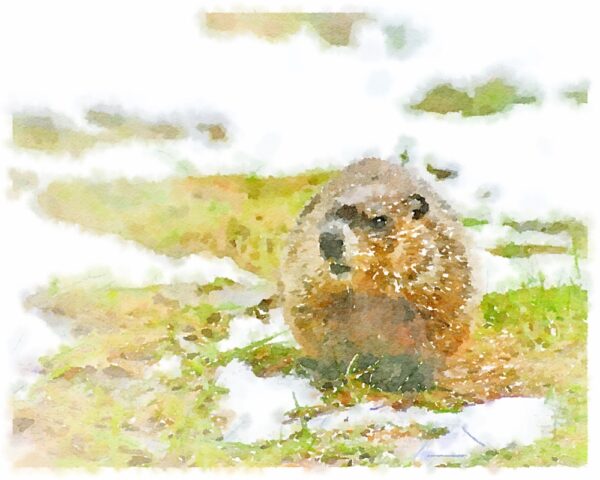
Punxsutawney’s Meteorological Marmot
What to make of an annual tradition centering around a groundhog venturing out of hibernation to prognosticate on the coming season? Let’s dig into the legend of Punxsutawney Phil.
Each February 2, on Groundhog Day, the members of the Punxsutawney Groundhog Club make the pilgrimage to Gobbler’s Knob, Phil’s official home.
The group waits for Phil to leave his burrow and, legend has it, if he sees his shadow we’re in for six more weeks of winter. If he doesn’t, we get to bask in an early spring.
Scientifically speaking, winter will officially come to an end on the equinox on March 20, regardless of what Phil predicts. But Mother Nature doesn’t always follow the timetable, and neither does Phil.
Though Phil has no meteorology degree, every year the United States tunes in for his prediction.
Phil’s track record is not perfect. “On average, Phil has gotten it right 40% of the time over the past 10 years,” according to the National Centers for Environmental Information, a division of the National Oceanic and Atmospheric Administration… (Source: CNN)
So, the meteorological marmot’s not the best indicator of whether or not winter will yield early/late to spring.
This year marks the third straight year the groundhog spotted his shadow, something that he has often done since making his first prediction in 1887. Of the 127 recorded times Phil has predicted the weather, he has now seen his shadow 107 (84%) times. His longest streak of seeing his shadow remains at 31, when he saw it every year from 1903-33.
It’ll take some time to figure out if Phil’s prediction will be right, but given his history, he’s likely wrong. (Source: USA Today)
But math be damned! There’s a whimsical charm surrounding the event. Seasonality keeps us in sync with our environment, wondering and wandering about nature, so the meter-marmot’s sub 50/50 track record isn’t really the point.
To better understand the popularity of Groundhog Day, Troy Harman (Penn State University history professor and Gettysburg National Military Park ranger) talks left brain, right brain and the science-to-tradition spectrum.
“Throughout history, whenever there has been a real strong emphasis on science, its counterpart of intuition, instinct, emotion, imagination — the right side of our brain — pushes back a little bit,” Harman says, explaining that Groundhog Day took off right around the time of the industrial revolution.
He says those massive societal and technological changes spurred a desire to return to what people imagined were simpler times, in the form of things like literary romanticism and gothic revival architecture…
“I strongly suspect that the people that go to Gobbler’s Knob are fully aware of the power of science, but at the same time want to hold on to traditions and a deeper vibe,” he says. “There’s the instincts and the intuition and the imagination that every human being has that has to come into balance with logic and reason.” (Source: NPR)
It seems there’s plenty more to be said on this logic, reason, and science versus intuition, emotion, and imagination comparison, but this isn’t the time or place. And I think that Harman’s probably right. Trusting in science and logic, many/most of us still allow room for romantic traditions and intuition. It’s quite likely a part of what humanizes us.
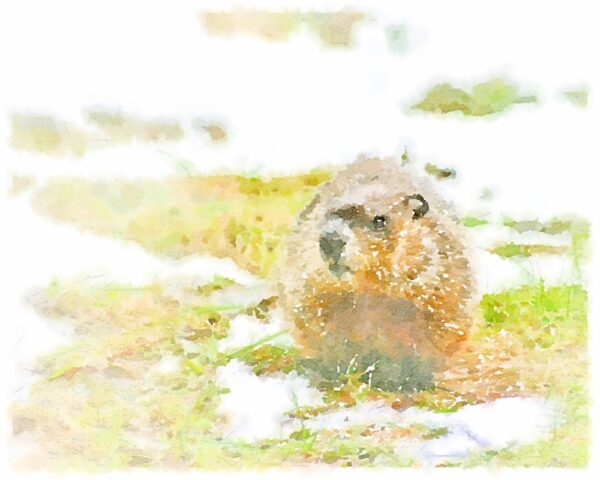
Six More Weeks of Winter
So whether today’s shadow viewing gets chalked up on the wins side or the losses side of Punxsutawney Phil’s tally, we’re likely to see another six weeks on winter weather in Essex. Sure, there will be some balmy days when the mud oozes, but it’s a rare year that February and even much or March aren’t snowy or at least inclement. But we’re hoping this year to take advantage of the high tunnel to fast-track spring in the vegetable garden, so we just might stand a chance of realizing the optimism in my haiku!
In closing, you may be wondering what the difference is between a groundhog and a woodchuck. And what about a marmot?!?! Although the three names are often used interchangeably, the “marmot” is exactly the same as the other two. While a groundhog and a woodchuck are one and the same wildlife (taxonomically Marmota monax), the term “marmot” generally refers to the entire genus Marmota and/or the subgenus Marmota which includes the groundhog (aka woodchuck, whistlepig, monax, moonack, whistler, groundpig, etc.) Armed with that tidy tidbit of trivia you’re armed and dangerous for happy hour this evening. Cheers to Phil. Cheers to spring!
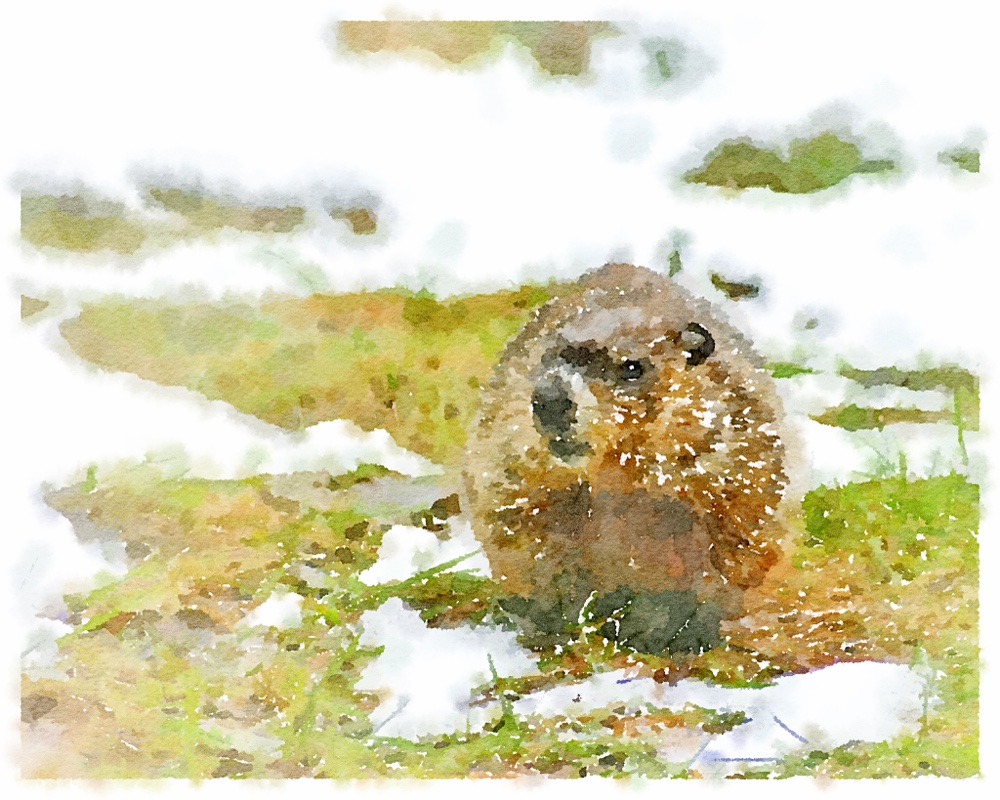
Leave a Reply